| Don't like ads? | No ads |
You could feel the excitement and nervousness from the Maker’s Mark staff in the early morning of September 7th. The group that stood before them was not your average group of tourists. These were enthusiasts who had been tracking the release of Maker’s Mark Cellar Aged Bourbon for months now. This would be the first of many tours over the coming weeks that catered solely to the new limited release. I was one of ten and can confirm that we all felt the same excitement too.
The tourism side of the bourbon industry has come a long way since the first tours started – ironically by Maker’s Mark – in the 1970s. Every major (and minor) distiller in Kentucky now knows they have to have experiences that cater to tourists. Not doing so is leaving money on the table in more ways than one. First off, tours can be incredibly profitable from extra purchases in the gift shops to marked-up cocktails and plates at the distillery’s own bars and restaurants. But more importantly, it establishes a psychological connection with the customers. Next time they’re in their local stores, they have a better chance of buying the brand they have a connection with.
Maker’s Mark wants to have the best bourbon tour experience in the world, so they invest heavily in what you get to see and do. The Cellar Aged Experience was the first time that Maker’s Mark has had a tour specifically tailored to the release of a bottle whereby the attendees get their very own bottle at the end. This will hopefully pave the way for more personalized experiences in the future.
The Cellar Aged Experience
My eagle-eyed neighbor Brad sent me a message in early August that Maker’s Mark would be selling reserve tickets to a new experience that came with a guaranteed bottle of their newest Cellar Aged bottle. For those of you who haven’t heard by now, Maker’s Mark has never released a bottle of age-stated bourbon (outside of the limited-release DNA Series) before. Every product that Maker’s has made has been from batches of barrels that were always aged around 6 to 7 years old (Maker’s strives to have them age for at least 6 summers). Over the last 10 years, they’ve rolled out with new products to diversify their lineup, but those mainly focused on stave-finishing. The age has always remained the same.

The tickets were priced at a not-entirely-unreasonable $250 which covered the cost of the bottle, two pours of Maker’s Mark (more on that in a bit), a free cocktail and a custom engraved stemmed whiskey glass. The retail price of this bottle is around $150 and anywhere from $55-220 for more advanced tours. So the cost was justified in my opinion.

Our group was led by Trevor Bowles, the manager of Maker’s Mark VIP Experiences. I could use lots of words to describe his passion and energy about everything Maker’s Mark, but the main trait I enjoyed the most is how approachable he was. He has this thing where he will smile after a question is asked – almost like he had a flash of joy that he got to tell us a little bit more about something that other tour groups wouldn’t care much about. He’s got a natural spark that fosters conversation.
First Stop: Grain Receiving
Perhaps one of the most boring aspects to distilling to most people is the delivery of grain to the distillery. I think it’s anything but. Trevor led us into the inspection room where a small team inspects and tests all incoming grains. Moisture levels, debris and mold are just some of the things that they are looking for.

The team works quickly to ensure that samples pulled from the trucks are quality-checked before they dump their load. I don’t know if Trevor was joking or not, but he said if the grain is rejected from the truck, the driver will go on down the road to Bardstown and see if any of the distilleries there want to buy it. That brought out some chuckles from the group.

A few quick facts about the grains:
- All wheat comes from one supplier – a farm in Peterson Farms/Loretto Grain located 9 miles away. They’ve been the sole supplier to Maker’s from day one.
- All corn is sourced from farms within a 60 mile radius
- All malted barley is sourced from various places in the Dakotas. This is somewhat the standard from my knowledge of other distillery’s sources.
Second Stop: The Still House
Trevor led us up the steps to the Still House, which houses three column stills (I swear I only saw two of them). They are all 36 inches in diameter which is on the larger size of stills outside of some of the other heritage distilleries in Kentucky. They have a total of 16 copper plates inside of each. All three column stills are attached to a doubler which raises the proof from 120 to 130 (then it’s proofed down to 110 before entering the barrel).
I’ve seen a couple of still houses before, but none compared to the almost “home-y” quality of Maker’s. The floors are hardwood, shelves are hung with mementos, the copper is all polished and it’s generally very clean. Obviously this part is made for tourists. The doublers are located under the floor and you could feel a subtle vibration while you stood there.

Standing around the columns and pipes was very loud, hot and humid. Trevor grabbed a stainless steel ladle and scooped up some of the distillate flowing through the still. Using a straw as a mini-thief, we each took a bit out to taste. An older gentleman told me that years ago when he took the tour, they used to pass the ladle around for people to sip directly from.

Everyone was fairly impressed with how good the spirit tasted in its white dog form. I thought it would taste much worse. Trevor said this is a hallmark of Maker’s. Bourbon that starts off as a clear spirit that already tastes very good from the still.
Third Stop: The Fermenters
It felt a bit out of sequence that we went into the fermentation room next. From a walking viewpoint, it made sense, but fermentation occurs before the distillation process. The fermentation room was full of charm. Eight Cyprus-wood fermentation tanks, each holding 10,000 gallons (relatively small if you’ve ever seen other fermenters) were all in various stages of being filled, actively bubbling and a relative when fermentation had naturally stopped. There was even a large stained glass window with the Maker’s Star logo.

It was at this point where we learned that what we had just seen was not all of the fermenters on campus. Maker’s Mark still has 46 additional stainless steel fermenters that are hidden from the public eye. This is pretty much the de facto fermentation vessel of choice these days, but I wonder what differences exist between the fermented mash that comes from the Cyprus tanks over the stainless steel ones. We also learned that the water source for Maker’s Mark is an 11 acre spring-fed pond located on the property. The water isn’t even filtered prior to being used, just screened filtered to stop larger debris from entering.
Fourth Stop: The Printing Press
A relatively quick stop in the tour; the printing room was where we got to witness a worker actively creating the paper labels that are put onto Maker’s Mark bottles. The machine looked like it was straight out of the 1800s. It’s simplicity is probably a key reason why Maker’s can rapidly change out designs to create all of those limited edition labels for their bottles (much like Woodford Reserve does). They even have a wall containing some of their most prized label designs throughout the years.

Fifth Stop: Warehouse A
If you know me, you know I’m a huge warehouse nerd. There is something undeniably cool about walking through them. Warehouse A is no different. One thing to note: when a tour leads you through a warehouse, chances are high that most of it is staged. No, I don’t mean the barrels are empty. But the setup isn’t how it would be in the other 99% of them.
For instance, Woodford Reserve’s tour walks you through Warehouse C which might make tourists believe that their barrels really are stacked in ricks that tall, but the truth is that 90% of Woodford’s barrels are palletized and stacked 7 tall in a sterile, heat-cycled warehouse. What I’m trying to say is that Maker’s Warehouse A had a certain charm to it, but I’m not so sure all of their warehouses look like this on the inside.

Maker’s other warehouses can be up to 7 floors tall and hold 50,000 barrels. Warehouse A is 3 stories tall and holds only 4,000 barrels. Some of those barrels feel intentionally exposed to show their information if you know what you’re looking for. For instance, my eye was quickly drawn to this barrel within just a few steps of entering the warehouse:

If you don’t know what you’re looking at, the alphanumeric code reads that this barrel was filled in February, 2011. That would put the age at over 12 years old! I did a quick scan of a few other barrels and saw ages more on par with what Maker’s would age their products to. This one was filled in October, 2018 for reference:

At the end of Warehouse A, we got to sample thief’ed straight from a single barrel of Maker’s what they considered to be a “fully mature” style of their bourbon. No age was ever given, but the proof was said to be around 109 proof. He indicated that barrels in Warehouse A are sometimes aged up to 8 years because it was a cooler warehouse that didn’t have multiple floors that got excessively hot.

After tasting it, we all described what we were tasting and about the general taste profile Maker’s goes for – basically a bourbon that is sweet enough without having any bitter oak to take away from any other flavors.
Sixth Stop: Margie Samuels exhibit and the Bottling Facility
The story about Margie Samuels was sprinkled throughout the previous stages of the tour, but on our sixth stop, the story of Margie Samuels was displayed in an exhibit that brought everything full circle. Within the stain-glass adorned walls we received more of her life story while also admiring her pewter collection.

The whole stories of the Maker’s Mark name comes from her knowledge of pewter makers back in the early 1900s. They stamped their finest pieces with their own marks as a way of declaring “I made this.” It’s very fitting to the whole theme of Maker’s Mark to draw the comparison of how both “makers” create a brand that is instantly recognizable.

The bottling line was about how you would expect. It was a mesmerizing display of bottles being moved by machines, filled and then capped. We witnessed 1.75 liter bottles of standard Maker’s Mark being bottled on this particular day. There were four workers who would hand-dip each one as it went past. The workers are switched out every 30 minutes or so to avoid repetitive strain injuries. I like to hear that’s a concept that they’ve embraced.

Seventh Stop: Warehouse D and the Gift Shop
After leaving the bottling line, we were not led through the main entrance of the gift shop. First we entered through Warehouse D which had real barrels aging inside of it with one special twist. A section of the ceiling above us contained ornate, hand-blown glass from acclaimed artist Dale Chihuly. Glass was a huge part of the whole experience I noticed.

It was in everything from the stained glass windows on the actual still house to the pulverized glass sidewalks (in certain areas) to the artwork sprinkled around the campus. Anyway, the gift shop was a quick stop to obtain some bottles and trinkets and then we were on our way to the final destination: The limestone cellar.
Eighth Stop: The Limestone Cellar
It’s not a cave! That was the common epitaph as we were walking in and around the gigantic limestone cellar building. If I’m being totally honest, I thought this cellar was a cave for many years. The pictures look like it’s in a cave, after all.
What it is is a man-made structure that Maker’s built into the side of a hill and completed in 2016. For some reason I thought it was much older, but this tracks according to the timeline of when products like Maker’s 46 and their line of Private Selection single barrels came out.

The first area we passed through was a warehouse floor where barrels are taken apart to stuff finishing staves inside of it. I would’ve loved to see this process in action, but no workers were present. However, we did get to see what the staves look like before they’re added into the barrels. For some reason, I envisioned them being longer. Each wood stave style has a different appearance with Cuvee being the most noticeable because of the grooves cut into it.

As we went through the door into the cellar, we were immediately hit a wall of chilled air. The temperature had dropped dramatically as the view of the barrels and natural rock came into view. Beth Buckner, Senior Manager of Innovation and Blending, came into view and was pouring our glasses of Maker’s Cellar Aged bourbon.

All around our feet were dozens of Private Selection barrels spending their required 9 weeks or so soaking in the flavors of the added staves. It should be pointed out that it’s difficult to see much outside of the immediate standing area, but the entire cellar holds 2,000 barrels. I’ll expand on what kind of barrels are resting in there a little bit later.
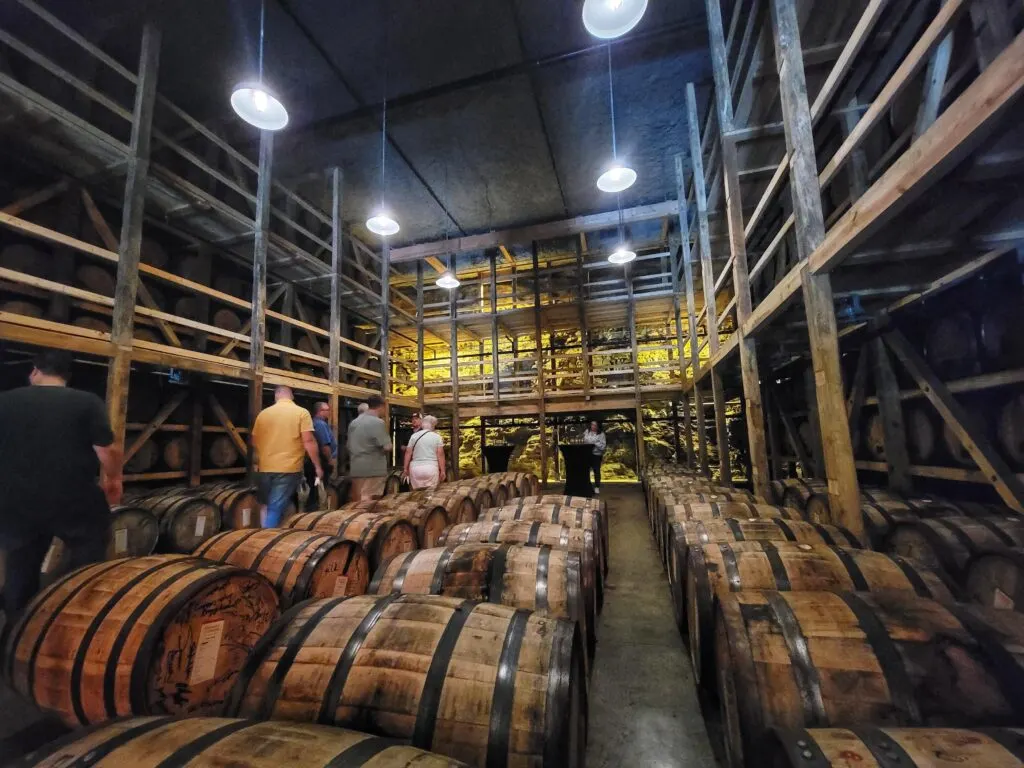
Maker’s Mark Cellar Aged and Warehouse Aged Bourbon
There were two separate tables with two bottles on it with pre-poured samples. We were told which was the Cellar Aged bourbon and which was the one that had spent 12 years of its life maturing in a standard rickhouse. Our discussions centered on describing the differences of each.
I must point out that due to the room being around 54 degrees, the liquid had already become a bit muted on my nose. The flavors, on the other hand, were very different. The oak wood notes were full-bodied. The sweetness was more like a dark brown sugar and I tasted a nice amount of fruit. It was rich and frankly wonderful in every way. The Cellar Aged, in contrast, tasted more similar to a standard Maker’s Mark Cask Strength bottling. Spice was the name of the game with both oak spice and pungent baking spices. My whole review is coming shortly, so stay tuned.
The bottle of Warehouse Aged Bourbon was turned backwards so we couldn’t see the label on it. I asked if I see it and take a picture. Strangely, I was told no. I’m not quite sure why because there are already pictures up online, so I’m just going to use u/jeannierak’s picture from Reddit.
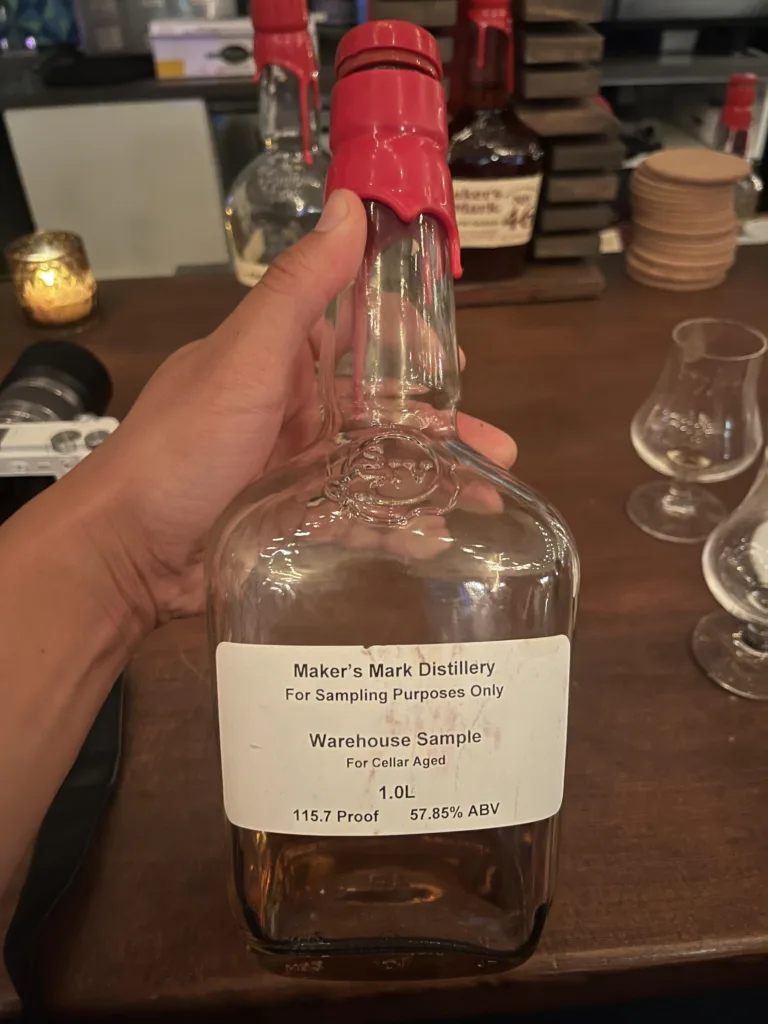
The Warehouse Aged Bourbon had climbed very high in proof as it aged, so it had to be proofed back down to match the final batched proof of the Cellar Aged. I have not heard what that proof was, but my assumption is that it was at least in the mid-to-high 120s. This is just a guess but is based on the fact that my Maker’s 110 proof barrel entry bottle of DNA Series reached 116 proof in under 8 years.
Stats on the Cellar Aged Bourbon were more freely given. By now, most of us have heard that there are 30,000 bottles of Cellar Aged available this year. Apparently 20k are destined for domestic consumption while 10k are going to be shipped overseas. As it turns out, the 10k number is slightly exaggerated. While no official number was given, the ratio is going to be more favorable to the US market than was expected.

This year’s Cellar Aged was comprised of 225 barrels in total. 13% of those barrels were 11 years old while 87% of the blend was 12 years old. In the coming years (yes, this will be an annual release), the barrels that are planned for the blend will be as low as 11 years old but as high as 14 years old! That’s excellent news. This is also why there were only certain areas that were accessible in the cellar – because there are other barrels and other projects hidden outside of the line of sight.
We were told that while the ages of the barrels and the ratio of their ages will change with each blend, Maker’s will continue to aim for a specific overall profile taste.
One last thing worth mentioning here is that the Cellar Aged release was a result of Rob Samuel’s passion to create something totally unique as his legacy unto the brand. This was just like his father Bill Jr. whose passion project was bringing Maker’s Mark 46 to life.
Private Selection Library
This is still a part of the Cellar, but there is a tasting room right before you exit the entire facility where you can see shelves full of bottles from various early Private Select picks. There’s also interactive displays that show more closeups of the staves and even some large decanters full of bourbon filled with just one style of stave. These are probably used to blend.

Interesting Factoids I learned throughout the day
I struck up a conversation with Trevor about the Maker’s Mark DNA Series and then hit him with an observation about it. I said that if my math was correct, not all of the barrels used in the DNA Series had been used in that release (I calculated that only half of the barrels were used). I then asked him if there were plans for them in the future. A big smile came across his face and he tried to avoid a full answer, but seemed to be pleased that somebody had noticed. I think that’s a a clue that we have not seen the last of the DNA series. I really hope they let it age over 10 years before re-releasing it.
As I took in the experience of the limestone cellar, I began to notice the touches that were built into the design to make it feel so cave-like. I believe on the far back top edge that you can see the HVAC duct (which is covered with the same material as the ceiling). This must be how they regulate the temperature. I was thinking the low temperature was a result of mother nature, but I’d be wrong. Also, most electrical lines are ran through the floors and ceilings whereas water pipes are externally mounted.

This isn’t to say that it’s not a one-of-a-kind experience to behold, but the pictures that I had seen prior to it definitely fooled me into it being a more natural environment.
No bourbon at Maker’s Mark is ever chill filtered
Maker’s Mark apparently has two warehouses that are filled with their barrels in Deatsville, KY. If you’re a Heaven Hill fan and are thinking to yourself “what the heck?” upon hearing that – you’re not alone. Stay tuned on an article I’ll create when I find out which ones are which.
Maker’s barrels are sourced from Kentucky Cooperage which is about 9 miles away. Their barrels are unique for a few reasons. The first is that they use metal hoops that are all the same size from top to bottom. This is strange in the world of coopers as the inner-most hoops are usually thinner. Secondly, the wood used on the heads are 1/8″ thicker than other cooperages. Both of these characteristics make them desirable for second-hand use by various overseas whiskey companies who find them to be far more sturdy in construction.
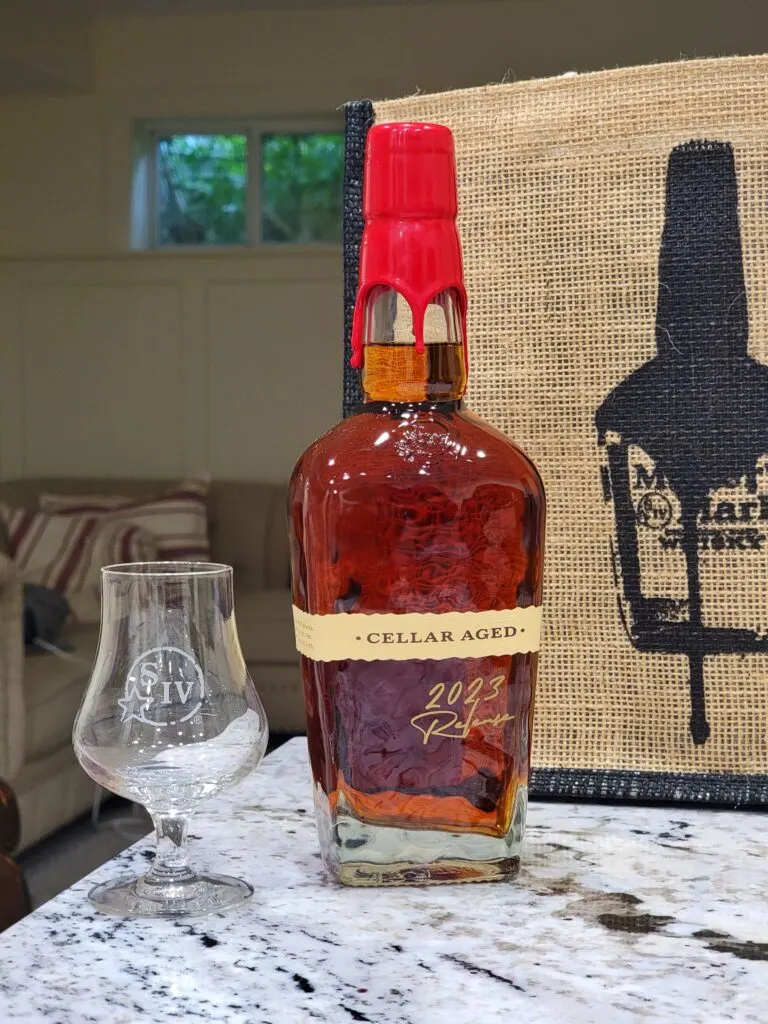
Thanks for reading my article and don’t forget to check out my Maker’s Mark Cellar Aged Review! Cheers!
Featured Products
- Neat Traveler

- View Larger
- Description:The Aged & Ore Neat Traveler is a complete travel kit for spirits. We combined our widely praised Neat Glass with one of our 3oz Flight Bottles and housed them together in a custom EVA travel case. Perfect for a night away with your favorite pour. The tie
- Bottle Flight

- View Larger
- Description:The Aged & Ore Bottle Flight is a premium set of 4 custom silicone wrapped glass bottles designed to transport and share samples of your favorite spirits. The flight bottles come in a custom EVA travel case that fits perfectly in any small bag. An Aged &
- Travel Bundle
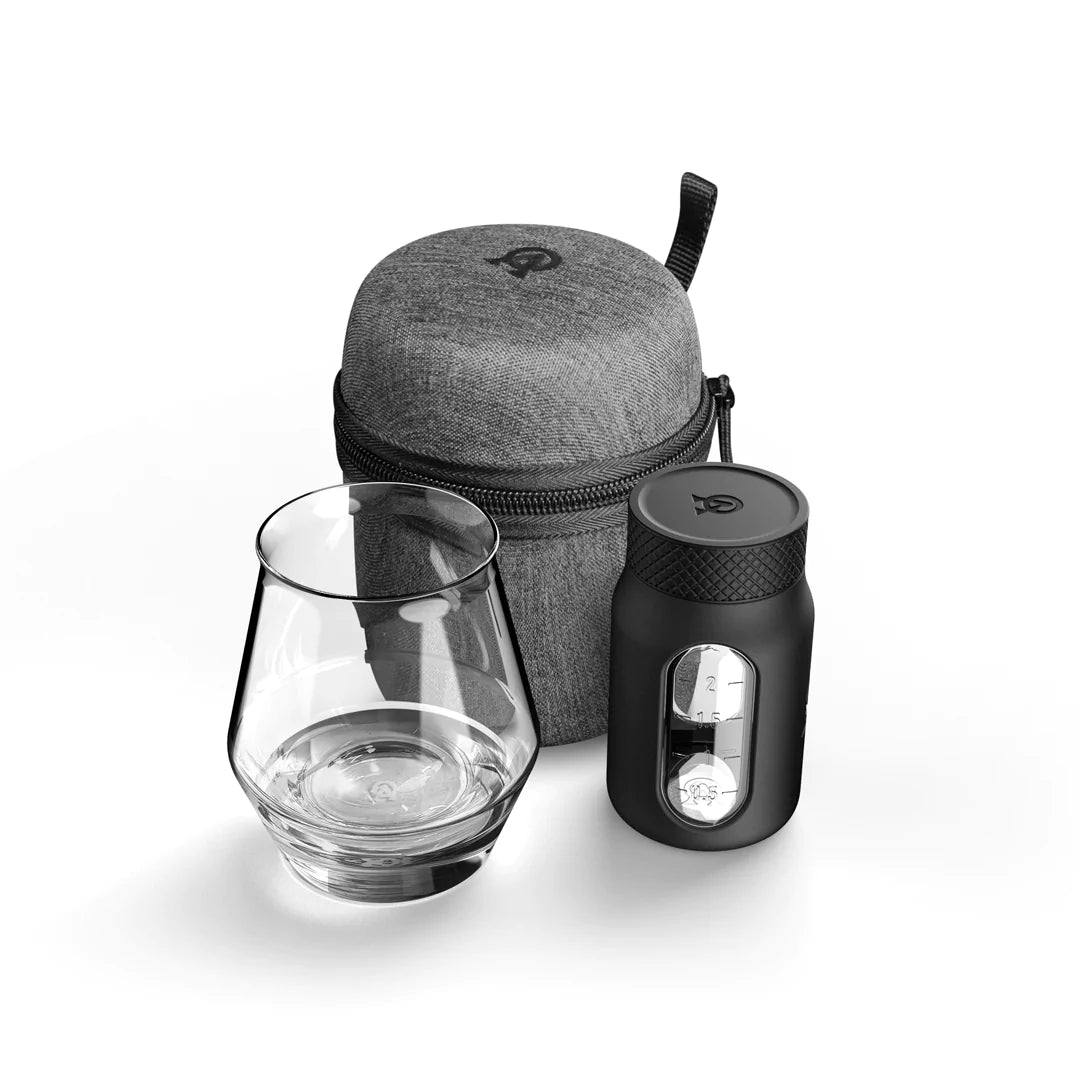
- View Larger
- Description:This Bundle combines two of our crowd favorite products, creating the ultimate travel bundle to bring along your favorite spirits and glassware. Bundle Includes: Neat Traveler (Gray) Bottle Flight (Gray) Note: This bundle is only available in gray and col
*Bourbon Culture is reader-supported. When you buy through links on our site, we may earn an affiliate commission.
